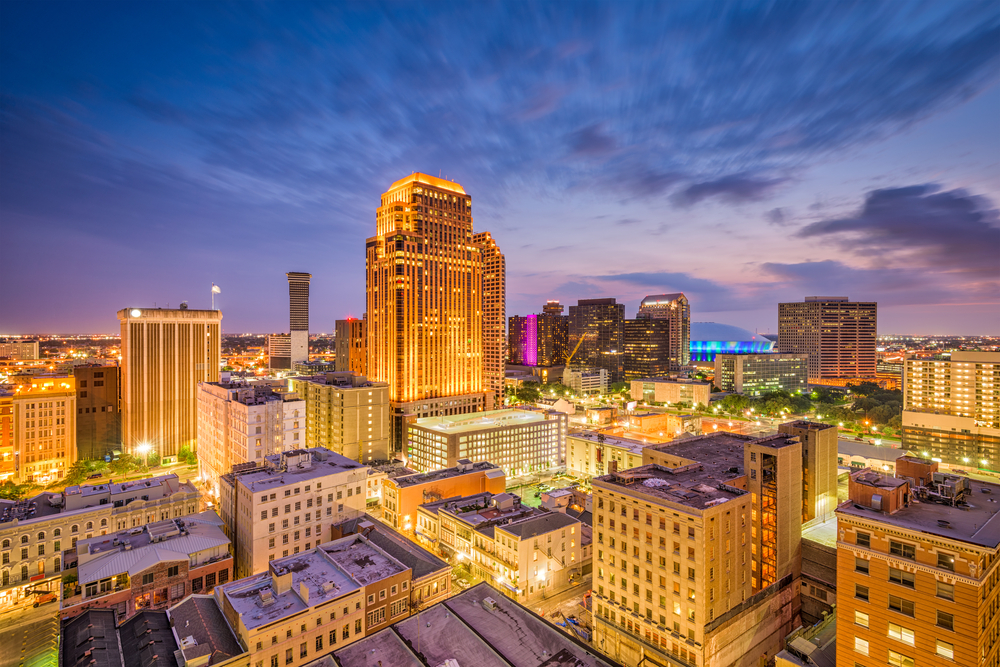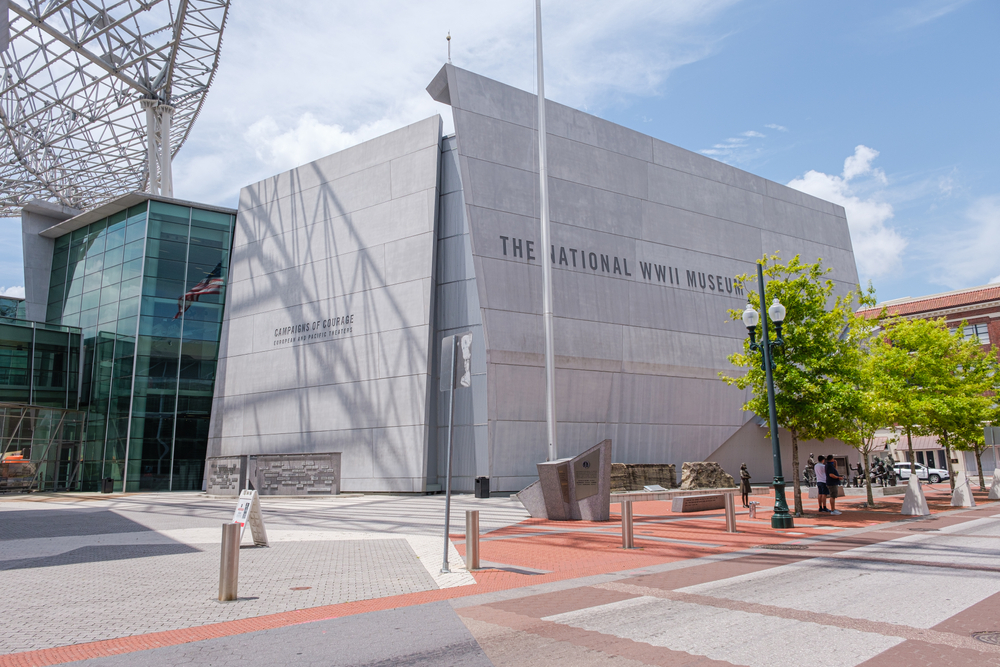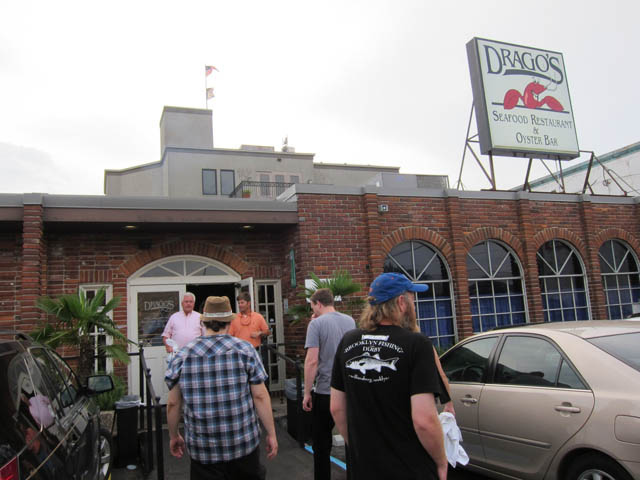
New Orleans, Louisiana, might be most famous for the French Quarter, but its charm stretches beyond Bourbon Street, beignets, and Mardi Gras. You could spend an entire weekend in Downtown NOLA and never run out of entertainment options, but you would miss all of the diverse New Orleans neighborhoods that make this thriving Southern city what it is today.
The city of New Orleans is threaded together by multiple neighborhoods, each with its own history, architecture, and personality. Well-known streets such as Canal Street and St. Charles Avenue connect one neighborhood to the next, making transportation between distinct areas easy to maneuver. You can hop on a streetcar and travel from the edge of the Mississippi River all the way to City Park, passing multiple neighborhoods along the way.
Our vacation rentals span across the city, giving visitors the choice between very different experiences. Each neighborhood offers a unique facet of New Orleans culture with varying activities, food, and surroundings. We’ve compiled this guide to help you decide which New Orleans neighborhood is right for your stay!
Central Business District

Known for museums, art galleries, and hosting major events
Also known as the Warehouse District, the Central Business District (CBD) is exactly what it sounds like – the hub of the city. The CBD is located next to the French Quarter and part of the larger Downtown New Orleans area. It is one of the oldest neighborhoods in the city, boasting architecture dating back to the 1800s. While it started as a residential neighborhood, it transformed into a business hub throughout the 20th century and is now famous for its sky-rise buildings, multiple sports arenas, and premier shopping and entertainment options.
The CBD is also known for its incredible art galleries and museums, allowing visitors to immerse themselves in the city’s local arts, culture, and rich history.
Who Should Stay in CBD
The Central Business District is ideal for visitors who are traveling for work or business-related activities, as it is the business hub of Nola. Most conferences and events are held in the CBD or nearby.
It is also ideal for guests who want to be right in the heart of the city, with easy access to popular restaurants, theaters, bars, and tourist attractions. In addition, it is known for its walkability and is just a few blocks away from the French Quarter.
It’s also the perfect spot to stay if you’re coming into town for a concert or sporting event at Caesars Superdome or the Smoothie King Center.
Top Things to Do in CBD

For art lovers, you won’t want to miss Julia Street. Also known as “Gallery Row,” Julia Street is lined with over a dozen art galleries celebrating local and well-known artists worldwide.
Dine at some of the top restaurants in the city, including Herbsaint and Let Chat Noir, before drinks at Bar Marilou in the Warehouse District.
And if you’re a history buff, be sure to visit the National World War II Museum.
Uptown

Known for architecture, local cafes, and live oaks
More residential in nature, Uptown is one of the most picturesque neighborhoods in New Orleans. Named for its location upriver, Uptown is home to Loyola University and Tulane, Audubon Park and Zoo, and the infamous St. Charles Avenue. Stroll the streets of Uptown, and you’ll find Victorian mansions set against the backdrop of century-old live oaks on every corner.
Here you’ll also find local coffee shops and restaurants, antique shopping, and art galleries, and plenty of outdoor activities. Uptown borders Garden District and Lower Garden District, where visitors can enjoy the many shops and food options along Magazine Street.
Who Should Stay in Uptown
Uptown is ideal for visitors who want to experience the culture of New Orleans without the larger tourist crowds of Downtown. Uptown will give visitors a more local feel of the city, with activities ranging from parks to family-owned corner restaurants.
The neighborhood is perfect for traveling with kids, as the area has many family-friendly activities.
Top Things to Do in Uptown

Uptown is a foodie’s paradise. It is home to some of the city’s most classic fine dining establishments, including Commander’s Palace and Clancy’s. But it also has plenty of more casual options, such as St. James Cheese Company and La Boulangerie for lunch. And you definitely don’t want to miss Domilise’s, one of the city’s oldest and most popular po’boy joints.
Outdoor enthusiasts will love strolling through Audubon Park, a 350-acre park that is home to the zoo, a golf course, and a 1.8-mile jogging trail. It is a beautiful sanctuary in the middle of a residential neighborhood, where you will find people walking, biking, picnicking, and performing street music any day.
The Marigny/Bywater

Known for local arts, live music, and the eclectic culture
Going in the opposite direction downriver, The Faubourg Marigny and Bywater neighborhoods have become more popular in recent years for very good reason. Standing side-by-side, they embody the eclectic New Orleans culture from the food to the art scene.
Every street is lined with colorful Creole cottages, mom-and-pop eateries, microbreweries, and music venues. Its residents care deeply for their neighborhood and invest back into it with local businesses and performances. It’s a neighborhood that speaks for itself, and you’ll feel like you’re part of something special as soon as you arrive.
Who Should Stay in The Marigny/Bywater
Visitors who want to experience the city like a true local will enjoy staying in the Marigny and Bywater. It’s the perfect spot for guests who value supporting local artists and businesses, especially when it comes to the live music scene. Of course, there are plenty of art galleries and museums to explore as well.
The neighborhood is extremely walkable, with coffee shops, restaurants, bars, and venues on every corner. If you’re hoping to explore the city on foot, this is the neighborhood for that.
Top Things to Do in The Marigny/Bywater
You can’t stay in the Marigny without visiting Frenchmen Street. Known as New Orleans’ best spot for music, Frenchmen Street is lined with music venues featuring jazz, reggae, hip-hop, and every other genre you can think of. It’s the low-key nightlife alternative to Bourbon Street that you’re looking for. Music Box Village is also a must-visit for a unique, interactive musical experience.
You’ll find locally-owned art galleries all over the Marigny and Bywater. Be sure to visit StudioBE, Dr. Bob Folk Art, and the Frenchmen Art Market.
Head to Bywater Bakery for breakfast, Bacchanal Wine for a drink and appetizers, and finish off at The Franklin for elevated American food in a cozy corner joint.
Treme/Lafitte

Known for Black history, soul food, and jazz music
Dating back to 1783, Treme is recognized as one of the oldest African American neighborhoods in the country and the birthplace of jazz music. To this day, the neighborhood pays tribute to its rich history and jazz roots by hosting concerts at Congo Square in Louis Armstrong Park.
Lined with colorful Creole cottages and shotgun houses, the neighborhood has maintained its historic architecture while experiencing a revitalization in recent years. Locals have opened thriving restaurants and businesses in the neighborhood, inviting visitors to partake in its tight-knit community.
Who Should Stay in Treme/Lafitte
Treme gives visitors a taste of New Orleans that few other neighborhoods can. It is ideal for those who want to immerse themselves in history and celebrate the Black community’s significant contributions to the city as a whole.
Treme is conveniently located a few blocks from the Central Business District in one direction and Bayou St. John/Mid-City in the other, making it ideal for exploring some of the most popular destinations in the city while staying in a more residential spot.
And if you are a jazz music enthusiast, there is no better neighborhood for you.
Top Things to Do in Treme/Lafitte

The Backstreet Cultural Museum is an important part of the fabric of this neighborhood. Located on St. Claude Avenue, the museum houses one of the world’s largest collections of Mardi Gras Indian memorabilia, jazz funerals and second lines, and other cultural pieces specific to New Orleans.
St. Augustine Catholic Church, another building of historic significance in the Black community, is a few blocks away.
And you can’t stay in Treme without experiencing soul food, from Willie Mae’s Scotch House’s fried chicken to I-tal Garden’s vegan jackfruit BBQ. Head to Backatown Coffee Parlour for a little bit of everything, including live jazz music on the weekends.
Mid-City

Known for outdoor activities, beer gardens, and mom-and-pop restaurants
Mid-City is the New Orleans experience you didn’t know you needed. Community members pride themselves on being distinctly “Mid-City,” and you’ll see why when you arrive. The neighborhood has a laid-back, relaxed residential feel while offering eateries and breweries on every corner.
Acting as a midway point between the Mississippi River and Lake Pontchartrain, Mid-City is centrally located to every part of New Orleans and provides easy access by public transportation and streetcars. Between the vibrant streets and the vibrant City Park in the middle of the neighborhood, it offers a walkable, bike-friendly destination.
Who Should Stay in Mid-City
Mid-City is the perfect neighborhood for active visitors who want to enjoy the city by foot, bike, or even boat. Boasting the largest outdoor space in New Orleans, City Park offers activities for the whole family to enjoy.
It’s also ideal for the laid-back guest who wants a local experience of the city and appreciates strolling from one neighborhood spot to the next.
Top Things to Do in Mid-City

Mid-City is a foodie’s dream, with off-the-beaten-path eateries that many tourists don’t know about. Katie’s Restaurant and Bar offers Creole-Italian food in a quaint corner joint. Toast is every brunch lover’s paradise. Blue Oak BBQ will rival any BBQ joint. And you don’t want to miss Angelo Brocato for delicious Italian desserts, like their famous cannolis.
Between Second Line Brewing, Bayou Beer Garden, and Wrong Iron, you’ve got plenty of options to choose from for craft beer.
The New Orleans Museum of Art is right in the heart of City Park. Right next to it is the city’s botanical garden. And be sure to check out the list of events and festivals at City Park, as there might be one happening during your stay.
Metairie

Known for family-friendly festivals and residential feel
Metairie is known as the first suburb of New Orleans. It offers a reprieve from the busy city while being only a few minutes away. It’s conveniently located close to the airport, making getting to and from this residential neighborhood easy.
Metairie is its own distinct “city,” in a way. It offers one-of-a-kind restaurants, shopping centers, entertainment options, and even sports facilities. It borders Lake Pontchartrain, providing beautiful views of the river and water activities for the whole family to enjoy. Metairie comprises long-time community members who take pride in their corner of New Orleans. It gives you easy access to the city while providing all of the amenities you could need nearby.
Who Should Stay in Metairie
Metairie is a family-friendly neighborhood with plenty of activities for all ages. It’s an ideal destination for those who want to enjoy New Orleans without staying in the crowded, bustling parts of the city. Instead, it offers visitors a quiet, residential experience among locals who have lived in the neighborhood all of their lives.
Guests who want to experience classic Creole food at more low-key, affordable spots will love staying in Metairie. There’s a delicious, family-owned restaurant on every corner with very few tourists around.
Top Things to Do in Metairie

Metairie has a few staple restaurants that have served the community for decades, and people travel from all over the city to enjoy their cuisine. Head to Drago’s Seafood Restaurant for iconic oysters and lobster dishes. Chef Ron’s Gumbo Shop might look unassuming, but it is known for its award-winning gumbo. And if you want to experience Cafe du Monde without the tourist crowds, there’s a Metairie location waiting for you.
For outdoor activities, guests can enjoy the walking and biking paths along Lake Pontchartrain, disc golf at Lafreniere Park, or visit Shrine on Airline, which hosts multiple sporting events throughout the year.
NOLA has a Neighborhood for Everyone
As you can see, each neighborhood offers a completely different experience of New Orleans. From the family-friendly, residential Uptown to the eclectic, artsy Bywater, visitors can choose between various personalities and interests when it comes to Nola neighborhoods.
While each neighborhood has a distinct identity, they all represent the larger culture that makes New Orleans so unique and special. They are connected to each other by famous streets and landmarks, threading each neighborhood together as part of the larger fabric of the city. No matter which neighborhood to book your NOLA vacation home, you’ll get to connect to New Orleans and its unique culture. We hope our neighborhood guide helps you choose the best way for you to experience New Orleans!
Featured Image Credit: f11photo
Latest Articles

6 Best Neighborhoods to Stay in New Orleans

Best Time to Visit New Orleans: Weather, Festivals & Travel Tips by Month

A Local’s Guide to Planning the Ultimate New Orleans Bachelorette Weekend

